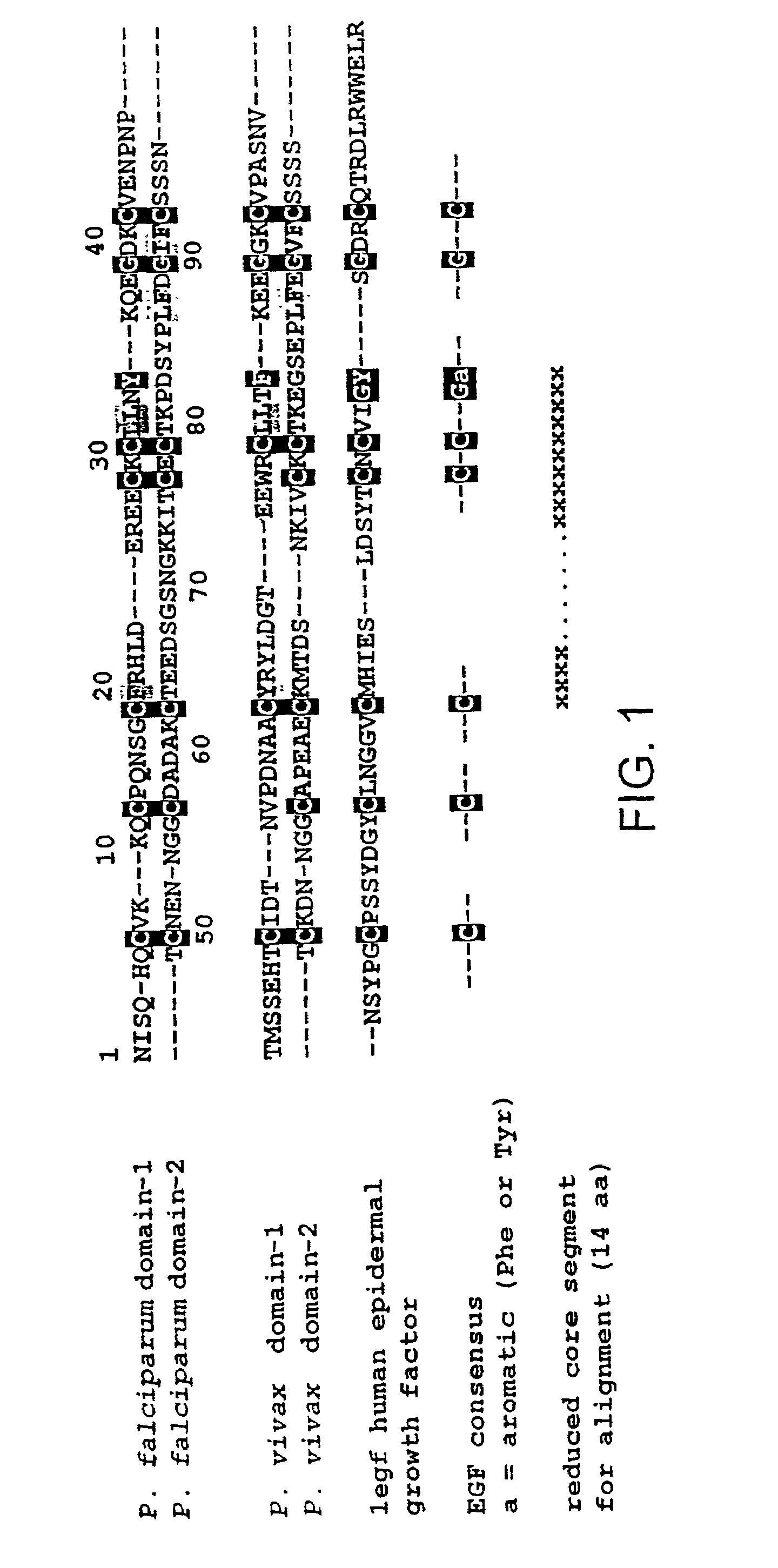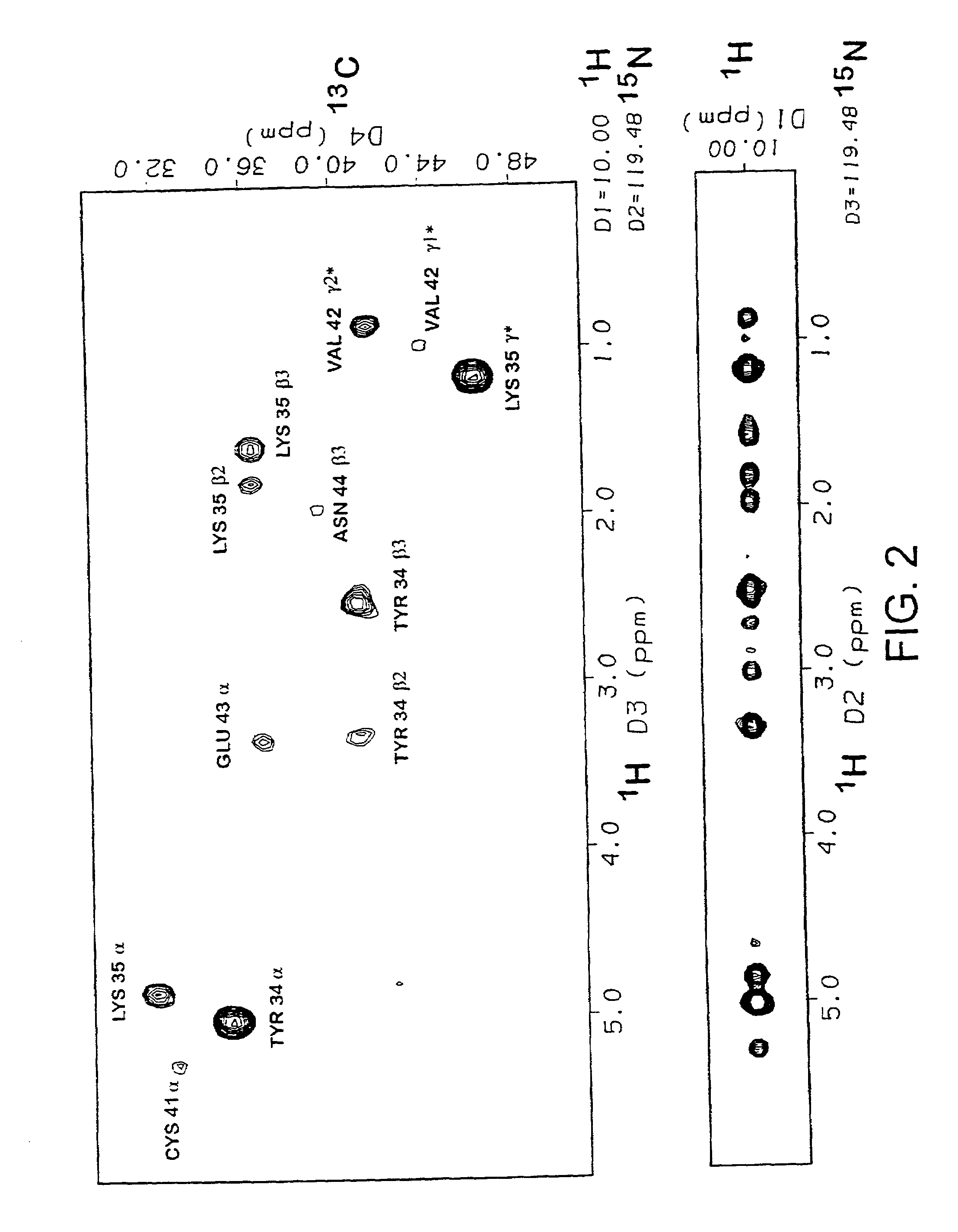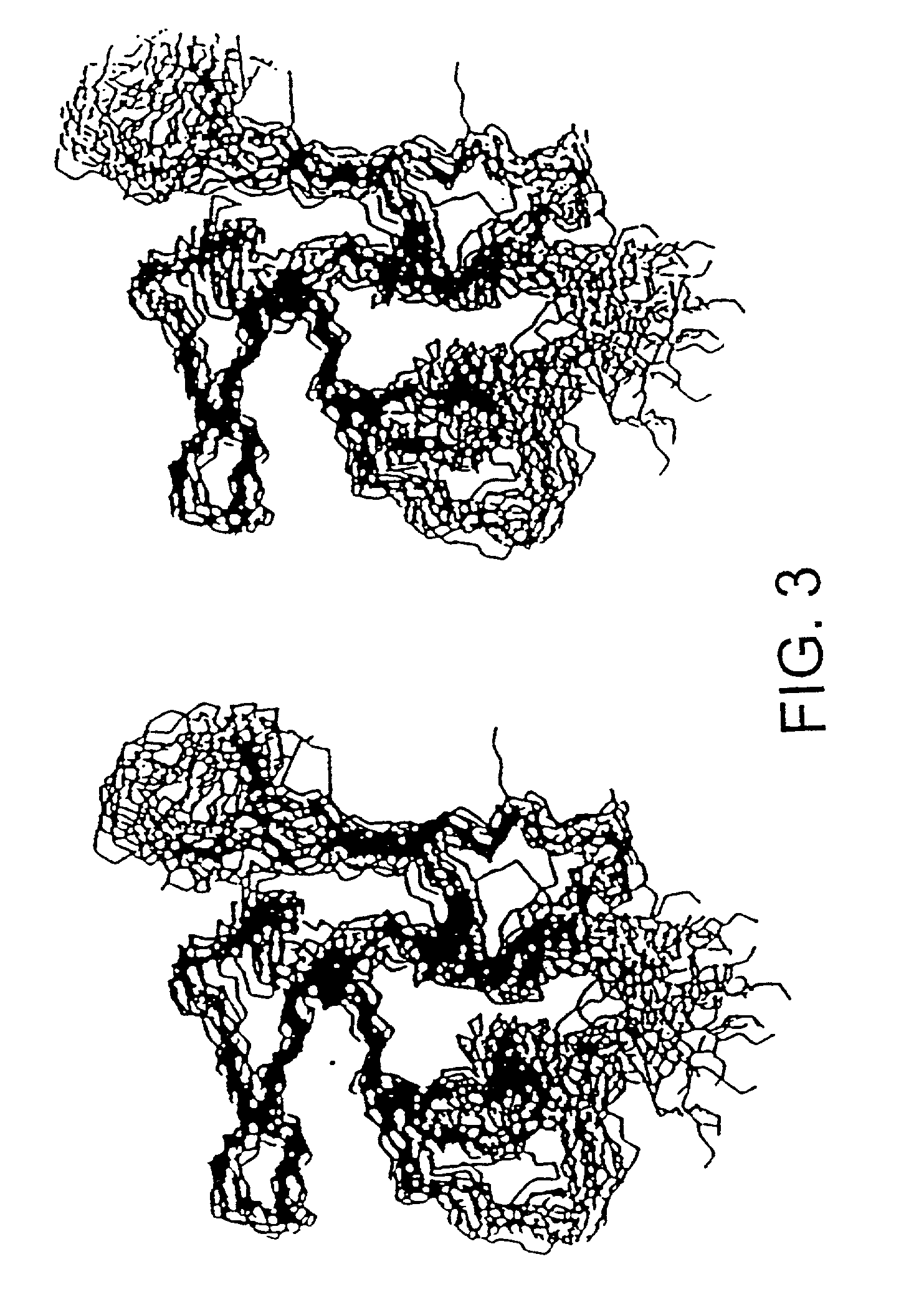Malaria vaccine
a technology of plasmodium msp1 and vaccine, which is applied in the direction of protozoa antigen ingredients, whole-cell/virus/dna/rna ingredients, botany apparatus and processes, etc., can solve the problems of rapid destruction, wide spread of morbidity and mortality, and affliction of individuals of all ages
- Summary
- Abstract
- Description
- Claims
- Application Information
AI Technical Summary
Benefits of technology
Problems solved by technology
Method used
Image
Examples
example 1
Resonance Assignments, NMR Restraints and Structure Determination
[0137]The assignments and restraints were obtained as described in Materials and Methods using a range of multidimensional heteronuclear experiments with 13C / 15N uniformly labelled protein. Sample spectra from 3D and 4D experiments showing NOE connections to the Lys35 backbone amide NH proton, resolved and unambiguously assigned using the 13C chemical shift information, are shown in FIG. 2. The distance, dihedral angle and hydrogen bond restraints used in the final set of structure calculations are summarized in Table 1. A total of 570 unambiguously assigned distance restraints, 85 dihedral angle restraints, and 10 hydrogen bonds were used in the final set. The assignments and restraint list shown in Table A have been submitted to the BioMagResBank database. Three disulphide bonds, with the (1-3, 2-4, 5-6) pattern for each domain were experimentally determined from the NMR data in preliminary calculations as described ...
example 2
Mutation and Monoclonal Antibody Binding Studies
[0146]As a step towards understanding antibody interactions with the MSP-1 C-terminal fragment, the effect of engineered point mutations (within domain-1) on antibody binding has been studied. Amino acid substitutions were made that consisted of radical changes. These radical changes consisted of, for example, replacing an aliphatic residue with a charged polar residue, replacing a positively charged side chain with a negatively charged side chain, replacing an amino acid with a large side chain with an amino acid with a smaller or no side chain (glycine), replacing a polar amino acid with a charged polar amino acid, replacing a polar amino acid with an aromatic amino acid, replacing a large aromatic amino acid with an amino acid with a small side chain, and replacing cysteine residues that are involved in disulphide bonds.
[0147]Four individual amino acid substitutions shown in FIG. 8, each completely abolish binding of one or more mAb...
example 3
Identification of Blocking Antibodies Using a Competitive Binding Assay and Immobilised Wild Type GST-MSP-119
[0177]In previous studies antibodies that blocked the action of the neutralising antibodies 12.8 and 12.10 had been defined either directly in the MSP-142 processing assay (Blackman et al., 1994) in a coupled erythrocyte invasion-MSP-142 processing assay (Guevara et al., 1997) or in a competitive radioimmunoassay with merozoite protein as the antigen (Guevara et al., 1997). These studies have been extended using recombinant MSP-1 and BIAcore analysis.
[0178]A recombinant fusion protein comprising wild type MSP-119 fused to GST was coupled to the sensor chip and competitor antibody was first allowed to bind to the antigen. Then a solution of either mAb 12.8 or 12.10 was passed over the chip and the amount of binding of this second antibody was quantified. If the first antibody interferes with the binding of the second antibody then this is reflected in a reduction in the amoun...
PUM
| Property | Measurement | Unit |
|---|---|---|
| time | aaaaa | aaaaa |
| pH | aaaaa | aaaaa |
| volume | aaaaa | aaaaa |
Abstract
Description
Claims
Application Information
 Login to View More
Login to View More - R&D
- Intellectual Property
- Life Sciences
- Materials
- Tech Scout
- Unparalleled Data Quality
- Higher Quality Content
- 60% Fewer Hallucinations
Browse by: Latest US Patents, China's latest patents, Technical Efficacy Thesaurus, Application Domain, Technology Topic, Popular Technical Reports.
© 2025 PatSnap. All rights reserved.Legal|Privacy policy|Modern Slavery Act Transparency Statement|Sitemap|About US| Contact US: help@patsnap.com



